

AT THE FOREFRONT OF THREAT DETECTION













As geopolitical instability grows, the demand for rapidly evolving technology and maximizing throughput is more important than ever.
Global security and aerospace company, Lockheed Martin, specializes in defense technology, solving complex challenges, advancing scientific discovery, and delivering innovative solutions that help its customers keep people safe.
Lockheed Martin’s all-domain mission solutions and 21st Century Security® vision accelerate its delivery of transformative defense technologies.
“Our customers face threats that require us to deliver innovation at scale and with greater agility than ever before to address their toughest challenges,” opens Chandra Marshall, Vice President and General Manager of Lockheed Martin Radar and Sensor Systems.
The leader in every domain in which its customers operate — air, land, sea, space, and cyber — Lockheed Martin has an unparalleled understanding of client missions.
To meet their needs, the company is digitally transforming its operations throughout the design and production process, ensuring the greatest efficiency without sacrificing quality.
“A joint force is a connected force, and our vision for 21st Century Security® weaves 5G technology through our proven platforms and combines them with the most
Identifying, tracking, and dealing with threats is imperative in national defense. Chandra Marshall, Vice President and General Manager of Lockheed Martin Radar and Sensor Systems, details how the company is at the forefront of threat detection
Writer: Jack Salter | Project Manager: Michael Sommerfield
advanced commercial technologies to increase capability and connectivity,” Marshall outlines.
Lockheed Martin’s business, the majority of which is with the US Department of Defense and federal government agencies, comprises four core areas specializing in defense technology – Aeronautics, Missiles and Fire Control (MFC), Space, and Rotary and Mission Systems (RMS).
Radars and sensor systems fall within RMS’ mission-first portfolio, along with rotorcraft technology, command and control, combat simulation and training, advanced cybersecurity, and undersea systems.
As the global choice for advanced radars and sensors, Lockheed Martin has a rich history of providing cuttingedge systems that are the proven, preferred air surveillance solution for more than 45 nations on six continents – and growing.
The company has established a broad legacy of producing highperforming, solid-state radars required for integrated air and
missile defense (IAMD), long-range surveillance, early warnings, and counter-target acquisition.
“Over the past 60+ years of delivering radars, we have proven that each system meets the technical requirements defined by the customer,” acclaims Marshall, who is responsible for the entire radar and sensor portfolio for domestic and international customers.
“With the incredible growth in our radar line of business, we are always finding ways to improve efficiency, apply digital technologies, and invest in product innovation to outpace the dynamic threats our customers face.”
Evolving threats demand that the company delivers modernized defense systems that are integrated using seamless and resilient networks.
Threat deterrence always begins with detection, and as escalation from bad actors increases, the US military and its allies need expansive radar systems that can adapt quickly to a range of potential threats in various landscapes.
Lockheed Martin is the trusted partner of armed forces across the
Chandra Marshall, Vice President and General Manager of Lockheed Martin Radar and Sensor Systems: “Protecting and supporting our armed forces and bringing them home safely to their families will always be a priority to me.
“Having grown up in a family that served in every branch of the service, this is in my DNA.
“After several years working in state and federal administration, it was time to put that mission into action. When a position opened at Lockheed Martin, I jumped at the chance to be a part of the organization.
“Working in the defense community is my way of supporting the men and women risking their lives for our freedoms.”

world for its reliable, upgradeable systems designed to operate in the digital age.
The company’s advanced radars and sensors, which also work with existing critical defense networks to keep cities, countries, and citizens protected from adversarial threats, perform surveillance, tracking, classification/discrimination/ identification, fire control engagement, and kill assessment.
Keeping the US and its allies safe requires a mature and progressive network of systems that flag incoming threats.
“Threats can mean many things – it could be a missile, unmanned aerial vehicle (UAV), aircraft, rocket, artillery, mortar, or maybe even something else,” notes Marshall.
“Radars are critical components of a defense system; they are the eyes that are responsible for identifying those threats and providing early warnings.”
Today, radars are trusted around
the world by many defense forces and networks on all battlefields – in the air, on the ground, in space, or at sea.
Lockheed Martin delivers systems that focus on situational awareness against the full array of evolving battlefield challenges.
“The capabilities that our radar and sensor systems provide ensure warfighters have full spectrum protection while on the battlefield and for homeland security,” Marshall informs us.
Whilst Lockheed Martin has delivered tailored solutions for the world’s most challenging national security missions for over a century, the company’s heritage of radar and sensor excellence dates back to the 1960s.
Since then, its long-range air surveillance radars have been in continuous service, demonstrating the radar engineering and program management capabilities of Lockheed Martin.
Among the portfolio’s core capabilities are ease of integration, harnessing the most advanced
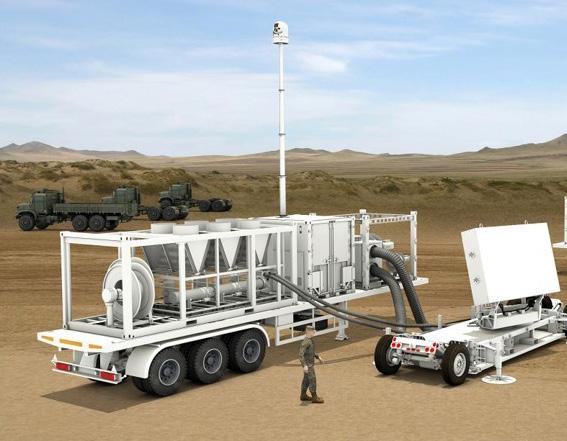
next-generation technologies, and building modularly with open architecture principles – Lockheed Martin is therefore setting the course for future radar design and development.
“Our radars are also designed with high commonality across the portfolio, leveraging decades of performance, design enhancements, and end-user feedback.”
There are a number of key radars in the Lockheed Martin portfolio, including the new Variable Aperture Digital Radar (VADR), a software-defined sensor that can be reprogrammed to emulate different adversary systems and training events.
In March 2024, the US Air Force Advanced Range Threat System Variant 3 (ARTS-V3) program awarded Lockheed Martin an initial $276 million contract to develop and produce VADR.
This new contract expands the
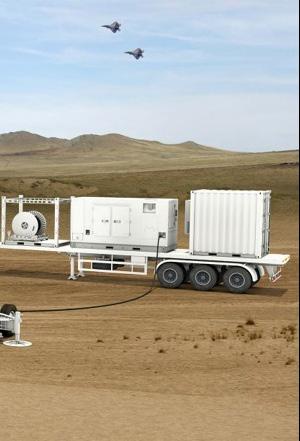

company’s radar superiority for X-band and C-band radars, which VADR will leverage to train aircrews for engagements against adversarial threats.
“ARTS-V3 enhances our product line and demonstrates that we are continuing to lead the way in next-gen radar capability,” Marshall insights.
“Our radar technology directly contributes to the overall strength of the US military. It continues to be our top priority to focus on 21st Century Security®; this includes training our troops with the most advanced systems to best protect our homeland.”
Elsewhere in the Lockheed Martin portfolio, TPY-4 is a multimission, ground-based radar for air defense surveillance that can operate in contested electromagnetic environments and provides the ability for warfighters to detect and track current and emerging threats.
“Our proven performance and reliability will encourage customers to strongly consider TPY-4 as a solution to augment their existing capability as the threat space evolves,” emphasizes Marshall.
TPY-4 was selected in March 2022 for the US Air Force’s ThreeDimensional Expeditionary LongRange Radar (3DELRR) program, and in November 2022, the company signed a contract with the Royal Norwegian Air Force to acquire
several TPY-4 radars.
Thus, Norway became Lockheed Martin’s first NATO partner outside the US for its TPY-4 radar as part of the P2078 NORSE program, which will replace existing radars as they become obsolete.
The main mission of P2078 NORSE is to enhance the military surveillance capability of Norwegian and adjacent airspace through the replacement of legacy systems with a solution that meets future needs.
“We look forward to offering TPY-4 to solve the evolving challenges of international partners,” Marshall urges.
Norwegian industry has been a crucial partner in the development of the TPY-4 radar, with Lockheed Martin leveraging an extensive supplier base in the Scandinavian country.
In particular, the company’s relationship with KONGSBERG Defense & Aerospace (KDA) resulted in the production of the first TPY-4 that included the Platform Electronics SubSystem (PES) built by KDA, a critical element in the foundation of this next-generation sensor that meets and exceeds current customer requirements for long-range surveillance.
TPY-4 also has the capability to be a solution for the modernization efforts of the North American Aerospace Defense Command (NORAD).
In San Diego, Core Systems is an expert in providing top-of-the-line, rugged industrial and military-grade technology solutions

Whether providing cuttingedge equipment for industrial operations or reliable technology for military applications, Core Systems can meet the unique requirements of organizations with critical needs.
As a reliable partner, the company specializes in manufacturing best-in-class rugged industrial computers, displays, handheld units, and other systems that can withstand shocks, vibrations, humidity, and extreme temperatures.
With two premier vertically integrated production facilities equipped with top-tier engineering and fabrication teams, Core Systems stands out for its comprehensive strategy towards product development and integration. This approach ensures that every aspect of its products is meticulously designed and tested to meet the highest standards.
From the conceptualization phase to the meticulous environmental
testing stage, Core Systems manages every aspect of the process in-house. It also has a complete machine shop on the premises, which enables it to rapidly create prototypes and tailor products to meet clients’ precise requirements.
In addition, it builds and integrates systems with Graphics Processing Unit (GPU) boards, which are used for artificial intelligence (AI) purposes. Moreover, the metal shop executes computer numerical control (CNC), punch fold, paint, and welding, and has its own environmental testing, integration, and cable manufacturing facilities.
Core Systems has achieved a significant milestone by successfully participating in the renowned Lockheed Martin HDR-G program, a testament to its capabilities.
This program, known for its advanced data processing and communication capabilities,
trusted Core Systems’ expertise to deliver robust and reliable solutions.
By being chosen for rack integration, the company played a pivotal role in ensuring the seamless integration and functionality of critical systems. The HDR-G program relies on Core Systems’ expertise to deliver robust and reliable solutions.
Renowned for its distinctive, rugged military-grade versions of the top server brands in the market, such as repackaging Hewlett Packard Enterprise (HPE), CISCO, and Arista, Core Systems stands alone in providing this service. This exceptional offering underscores its engineering prowess and unwavering commitment to delivering solutions that surpass industry standards.
Core Systems is a highly regarded company that specializes in providing cutting-edge hardware
solutions and advanced AI technology to military forces across the globe. We create the only rugged HPE servers that support certain AI capabilities. Furthermore, machine learning (ML) is designed to adapt to ever-changing and challenging environments, enhance security, and safeguard robust encryption for sensitive data. At the same time, AI-powered simulation offers realistic combat training scenarios. Rugged systems are built with extreme durability in mind to withstand harsh conditions.
With its innovative technology, Core Systems has gained recognition and adoption from


military forces worldwide, including the Army, Navy, and other defense agencies. The company’s solutions have proved to be highly effective in enhancing the accuracy, speed, and reliability of military operations, thereby increasing the safety and success of personnel on the ground.
Through ongoing R&D, Core Systems continues to push the boundaries of AI technology, enabling military forces to stay ahead of the curve and maintain a competitive edge. Its commitment to excellence and an unwavering focus on safety and
security make it a trusted partner for military forces worldwide.
With a relentless focus on quality, reliability, and customer satisfaction, Core Systems has a proven track record of success.
A portfolio of groundbreaking solutions ensures that the company is committed to its vision of empowering its customers to achieve their goals.
As an industry leader in technological innovation, Core Systems is dedicated to providing cutting-edge solutions that meet the evolving needs of the industrial and military sectors globally.

Core Systems follows a design strategy that involves collaboration with its engineering team to ensure efficient product realization, whilst its world-class mechanical design engineering team provides product design. The next stage of the process involves a vertically integrated facility that enables rapid prototyping capabilities. After that, an on-site product test laboratory validates each new design to meet military specifications (MIL-Specs). Product assembly occurs at Core Systems’ facility with multiple production floors. Additionally, every product comes with a standard warranty and lifetime support.
Core Systems has extensive experience in commercial and defense programs spanning aerospace, transportation, military, security, and intelligence across the land, sea, air, space, cyberspace, and joint all-domains. The company has expertise in developing mission-critical systems for various applications
designed to meet environmental demands and adapt to an everchanging battlefield. Its history dates back to 2007 when it created sensor signal processing for defense applications, missioncritical airborne systems, and other purpose-built systems that exceeded expectations.
Core Systems provides a diverse selection of top-quality openframe racks, server racks, and enclosures suitable for a wide range of missions. In addition, the company offers integration services that involve assembling a fully configured rack cabinet system ready for deployment on the same day it is shipped. Its team of experts is always available to help select the best
cabinet for specific mission requirements.
Specializing in developing mission-critical systems for various applications, Core Systems’ solutions are designed to meet the environmental demands of each unique mission and adapt to the constantly changing battlefield.
With a strong track record of creating sensor processing systems and designing and developing mission-critical airborne systems for various military and defense applications, the company is a trusted leader in the industry.
Core Systems’ portfolio of rugged solutions and one-off designs is

purpose-built to exceed mission expectations. It adapts to the battlefield’s changing demands to ensure its products perform optimally in any environment. From advanced radar technology to improving intelligence, surveillance, and reconnaissance (ISR) capabilities, it is committed to providing customized solutions that meet the unique needs of military operations. Dedicated to ensuring excellence from start to finish, Core Systems offers a reliable solution for every possible military application with precision, expertise, and unmatched reliability on the battlefield.
Core Systems has a rich experience in creating robust computing solutions for the military. Its portfolio includes a wide range of projects with both commercial and defense programs. The company works closely with all military branches, designing customized solutions that suit specific deployments and ensuring that every challenge is met with innovation.
For years, Core Systems has worked tirelessly to create secure and reliable solutions for military aircraft, navigation, and other airborne applications. The company’s advanced computing solutions, including highdefinition displays and SWaPC-optimized mission computers, are among the most powerful and dependable in the world, designed to withstand the most challenging environments and ensure the safety and security of military personnel.
Taking pride in its commitment to providing industry-leading products tailored to meet specific needs, Core Systems ensures
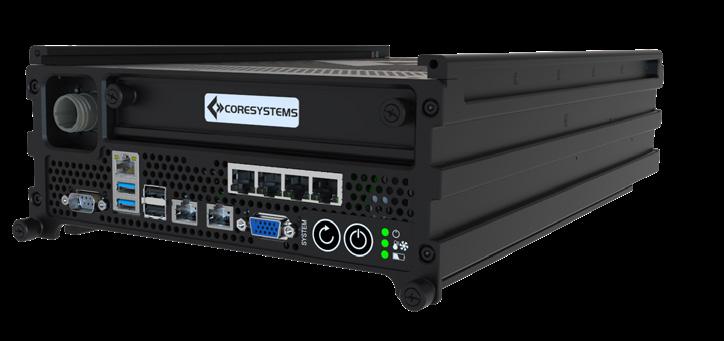
that customers can complete their missions efficiently and confidently.

Core Systems delivers rugged, reliable technology for multidomain operations worldwide. It showcases its ability to overcome complex problems with versatile systems that thrive in extreme environments. It also has a long history of creating defense solutions for naval platforms built with size and safety in mind.
As the US Space Force continues to make great strides and push
APPLICATION-SPECIFIC DESIGN REVOLUTIONIZING MILITARY APPLICATIONS
Core Systems’ cutting-edge applications include:
• Military aircraft systems
• Training and simulation
• ISR
• Joint all-domain
• Radar
• Land systems
• Unmanned aircraft systems (UAS)
• Signals intelligence (SIGINT)
• Electro-Optical/Infra-Red (EO/IR)

boundaries in the field of space exploration, Core Systems is proud to work alongside NASA in developing cutting-edge computing solutions designed to withstand outer space’s harsh and demanding conditions. The team is committed to providing the necessary tools and technology to support space missions at all orbit levels, ensuring that astronauts and researchers can access reliable and efficient computing resources while exploring the final frontier. The military’s primary concern is the growing speed of cyber threats worldwide. Core Systems has spent years diagnosing, preventing, and solving these threats, providing multi-domain solutions that can operate independently or together across mission-critical infrastructure. The company ensures that systems operate without interruption and that missions are covered at all attack points.
Collaborate with Core Systems to blend cutting-edge technology with dependable systems to meet modern military demands.



The radar represents a leap in performance over Lockheed Martin’s FPS-117 radars, which have been operating continuously in NORAD’s North Warning System for over 30 years, and is well-suited to detect the smaller, faster-emerging threats of today.
“Our radar portfolio thrives on several key attributes, including commonality across radars, softwaredefined architecture, and the ability to easily integrate with existing defense systems,” states Marshall.
Lockheed Martin’s radars are designed with a high degree of commonality to enable sustainment efficiencies and significant cost savings for customers. TPY-4, for example, significantly leveraged the blueprint of Sentinel A4, a highperformance replacement of the aging legacy Sentinel A3 radar.
“Our scalable technology has resulted in significant international interest in both the Sentinel A4 and
TPY-4 radars to replace older assets that simply cannot be upgraded to match what our next-generation systems are offering.”
Sentinel A4 provides significant improvements to its predecessor’s existing capability against cruise missiles, unmanned aerial systems, and rotary wing and fixed wing threats.
This includes the ability to detect rocket, artillery, and mortar (RAM) threats, provide RAM points of origin and impact locations, and add protection against electronic threats.
Sentinel A4 will be incorporated into the National Advanced Surfaceto-Air Missile System (NASAMS) for the National Capital Region (NCR) and is considered the radar of choice for nations looking for IAMD solutions.
In addition to Sentinel A4’s role of protecting warfighters in combat, the new radar has been selected to protect NCR and support the defense
Radars transmit and receive high-frequency radio waves to detect and track things that may not be visible to the naked eye.
The data collected by radars helps operators in the field to make informed decisions about what to do next.
In national defense, radars are imperative to the security of armed forces and civilians because they provide early warnings against adversarial threats.
STEP ONE: TRANSMIT – Radars send out narrow beams of electromagnetic radio waves in short or long pulses via a transmitter.
STEP TWO: REFLECT – Those waves can be intercepted and reflected, which helps radar operators to determine many features of detected objects such as distance, direction, speed, shape, and range, to name a few.
STEP THREE: RECEIVE – The receiver accepts the returned energy of the radio waves and measures the time elapsed since the transmission. The distance, or range, of that object is calculated by measuring the total time the radar signal takes to make the trip to the target and back.
STEP FOUR: DETECT, CLASSIFY, AND ACT – All this digital data is then processed in real time to determine the range and trajectory of detected objects, as well as their threat level.
of Guam, a US island territory in Micronesia.
The new radar’s integration with NASAMS for NCR’s air and missile defense capability will provide critical security to vital strategic assets.
“Sentinel A4 with NASAMS for the NCR will be a tower-mounted, fixed air defense asset to detect the latest threats of our adversaries,” Marshall shares.
“Placing Sentinel A4 radars on towers to detect today’s modern threats and protect high-priority assets can be easily duplicated by other services and partner nations around the world.”
Utilizing the latest in gallium nitride (GaN) technology and a digital active electronically scanned array (AESA) architecture, Sentinel A4 provides both 360-degree and stop-andstare capabilities with a 75 percent increase in range over the legacy system.
It also offers high performance in all conditions with the ability to detect threats amid bad weather, complex terrains, and contested environments.
“Lockheed Martin has been investing in GaN technology for radar applications since 2002 and was the first to produce radar systems featuring GaN with TPS-77 in 2015 and Space Fence, which became operational in 2020,” highlights Marshall.
In order to integrate with a broader defense system, Sentinel A4 interfaces with command and control, and sends collected data to help the user determine the next step in the engagement and protect the defended area.
Sentinel A4 works with the US Army’s current IAMD Battle Command System (IBCS) and Forward Area Air Defense C2 (FAADC2). Providing data to these two C2 systems allows them to leverage critical information to determine the best course of action to address a threat.


The threats to military and civilian assets are advancing every day.
In this volatile global environment, the US military and its allies look to advanced radar systems that can protect them as they perform various missions and adapt to an ever-changing landscape.
Lockheed Martin has decades of experience in developing and delivering ground-based, naval, and aerial radars designed to integrate seamlessly into existing systems.
IBCS talks to the US Army’s Indirect Fire Protection Capability (IFPC) Increment 2, and as the primary sensor for IFPC, Sentinel A4 is integral in supporting critical asset protection.
Then there is the TPQ-53 radar system, which has a rich history of protecting the US for more than a decade.
With proven experience in counterfire support, the solid-state phased array detects, classifies, tracks, and determines the location of enemy indirect fire.
TPQ-53, which can be rapidly deployed, emplaced, and displaced, has consistently maintained greater than 95 percent operational availability, and Lockheed Martin
continues to modernize and increase the capabilities of the radar as threats evolve.
For example, the company has added multi-mission capability, which enables the detection of unmanned aircraft systems (UAS) and other small threats, as well as added air surveillance capability for the medium-range detection of fixed wing, rotary wing, and UAS threats.
“We have been working with the US Army on TPQ-53 for over a decade, and our partnership continues to be one of excellence as we support operations, maintenance, repairs, and upgrades to deliver outstanding performance and reliability,” prides Marshall.
In late 2023, meanwhile, Lockheed Martin was contracted to extend the

Qorvo’s RF MMICs, backed by three decades of GaN/GaAs expertise, redefine radar performance with unmatched reliability and sensitivity for aerospace and defense applications. With Qorvo’s industry-leading design, assembly and test of heterogeneous packaging for superior integration, module solutions meet stringent SWAP-C requirements for your next-generation phased array radar systems. Explore Qorvo’s radar innovations today.
life of the Royal Danish Air Force’s two TPS-77 long-range transportable radars.
Expected to receive a mid-life upgrade by mid-2025, TPS-77 operates 24 hours a day, provides continuous high-quality 3D surveillance on air targets, and offers superior long-range detection and 360-degree azimuth coverage.
“Lockheed Martin was awarded the initial Danish contract in 2005 for two TPS-77 radars to enhance Denmark’s air surveillance capabilities. The systems are stationed at fixed sites but can be quickly redeployed when
Lockheed Martin has a strong history with Core Systems dating back to 2018.
Core Systems represents the epitome of a strong small business partnership, as they provide the back-end command and control for Lockheed Martin’s radar systems.
“Core Systems remains committed and has ebbed and flowed with us through customer needs and industry changes,” attests Marshall.
Beyond delivering on time and to specific requirements, Core Systems has also invested heavily to support Lockheed Martin. This includes a large production facility that has been built in California.
“They know how critical their contributions are to Lockheed Martin and our government customers, ultimately playing a major role in overall homeland defense. Core Systems is a great partner with great capability – they keep coming back and stepping up to help us.”
required,” Marshall expands.
TPS-77 is in service worldwide in Australia, Brazil, Estonia, Indonesia, Iraq, Jordan, Latvia, Malaysia, Pakistan, South Korea, the UK, and the US.
Lockheed Martin’s Long-Range Discrimination Radar (LRDR), designed and developed for the US Missile Defense Agency (MDA), is the next generation of ballistic missile defense. LRDR provides precise tracking and unparalleled discrimination of missile threats combined with simultaneous space domain awareness.
Just recently, LRDR was officially handed over to MDA in preparation for an operational capability baseline (OCB) decision and the final transition to the warfighter.
“This milestone represents years of dedication to MDA’s mission to protect our homeland. LRDR is a cutting-edge asset providing the benefits of both low and highfrequency radars for an innovative approach to searching, tracking, and discriminating targets,” says Marshall.
The radar is able to simultaneously search and track multiple small objects, including all classes of ballistic missiles, at long range and under continuous operation.
LRDR’s discrimination capability allows it to identify lethal objects, such as enemy warheads, and differentiate them from non-lethal decoys. Along with other elements of the Missile Defense System (MDS), which LRDR is integrated into, the radar conserves the number of ground-based interceptors (GBIs) required for threat engagement.
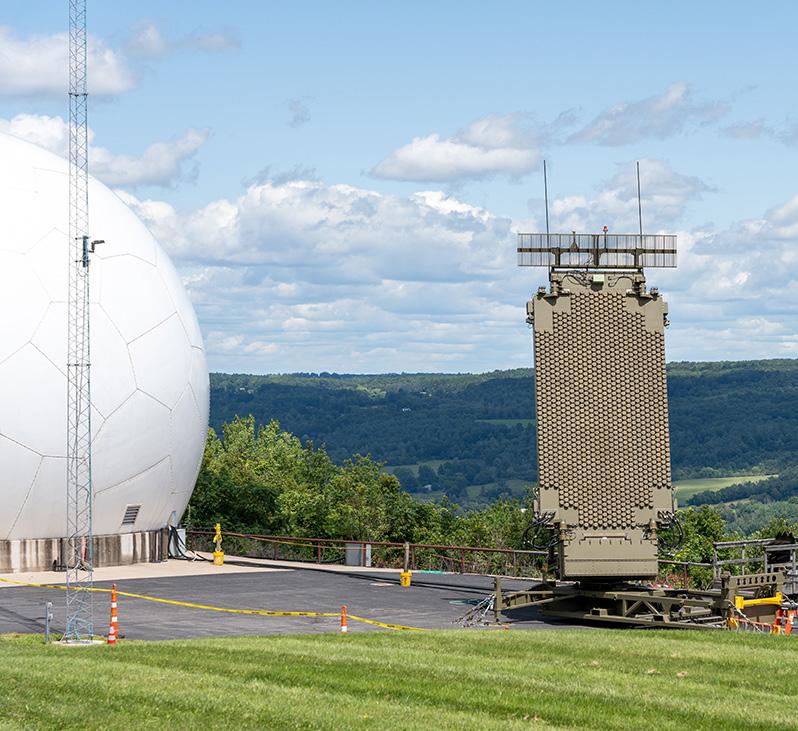
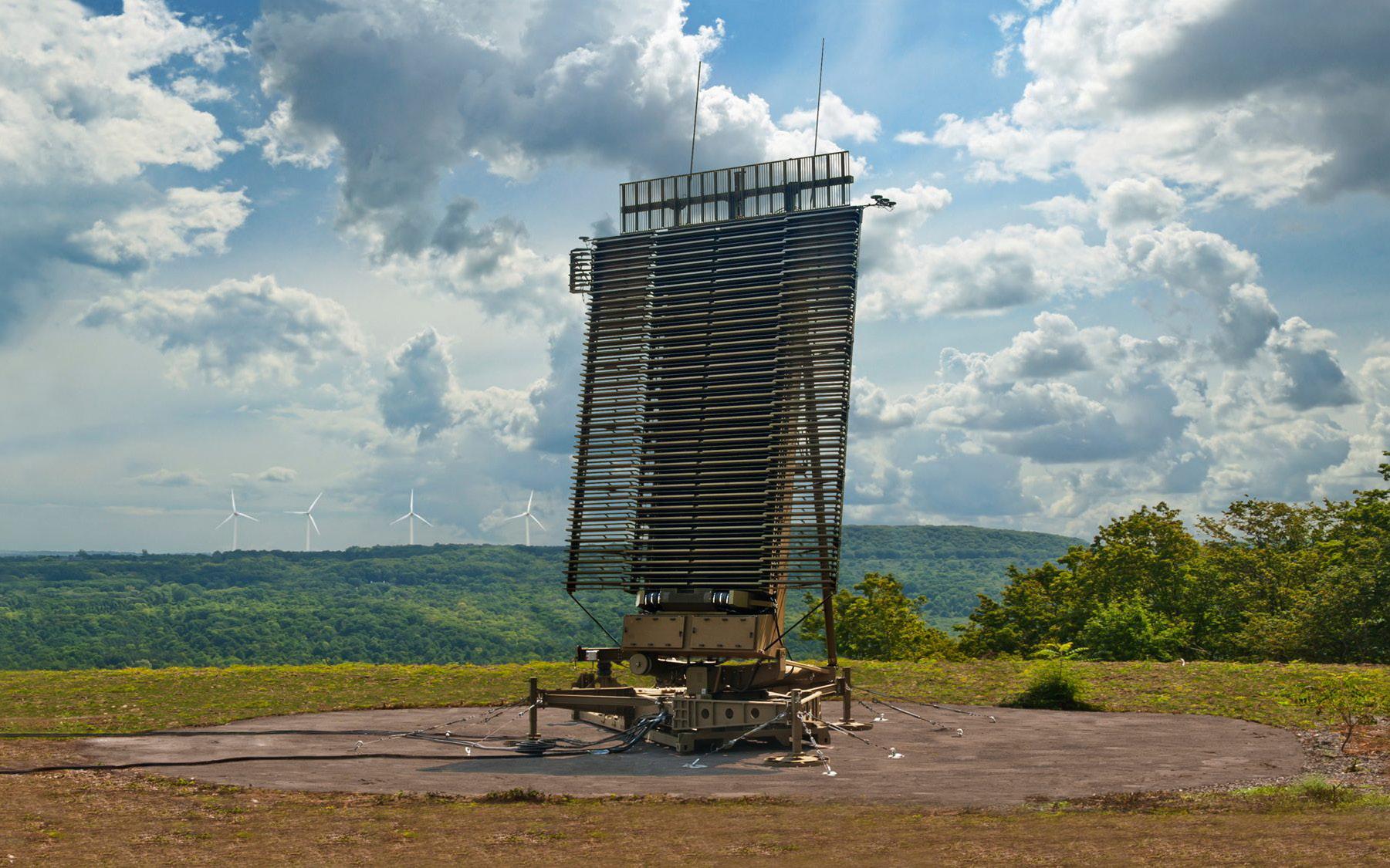

“OUR CUSTOMERS FACE THREATS THAT REQUIRE US TO DELIVER INNOVATION AT SCALE AND WITH GREATER AGILITY THAN EVER BEFORE TO ADDRESS THEIR TOUGHEST CHALLENGES”
– CHANDRA MARSHALL, VICE PRESIDENT AND GENERAL MANAGER, LOCKHEED MARTIN RADAR AND SENSOR SYSTEMS
The highly adaptable LRDR features an open systems architecture designed to be scaled and extended to counter evolving threats without changing the hardware design.
Exemplifying this open systems architecture is LRDR’s added capability in support of hypersonic defense, giving decision makers actionable information to make fast, timely decisions.
In addition to missile defense, the radar system supports space domain awareness by monitoring satellites orbiting the Earth and detecting, tracking, and identifying active or inactive satellites, spent rocket bodies, and debris.
Rightly lauded for its primary mission of missile defense, LRDR’s secondary mission of space domain awareness was once considered a tranquil final frontier.
Now, however, space has emerged as the latest – and arguably the most complex – domain for military operations.
The US faces a number of challenges in this new domain today, from counterspace technologies and space debris to orbital congestion and the rapidly advancing space capabilities of adversaries.
To enable the US to monitor and
safeguard its vital space assets, ensure the peaceful use of outer space, and maintain a technological edge in this critical domain, the need for robust space domain awareness has never been more urgent.
Space domain awareness is fundamental in achieving the cornerstone responsibilities of the US Space Force (USSF) – preserving freedom of action, enabling joint lethality and effectiveness, and providing independent options.
The USSF doctrine, which states that “obtaining and maintaining domain awareness is fundamental to successful operations in any environment”, underscores the importance of SDA.
Government agencies lead in space domain awareness with the most discerning radar technologies
and software known to mankind.
LRDR, one of three technologies that are revolutionizing the frontier, has successfully passed several space domain awareness events in recent months, confirming the radar’s warfighter capabilities.
These events, which give information on how the radar behaves during a resident space object (RSO) environment as well as future capability upgrades, are intended to provide early use of LRDR to USSF and US Space Command (SPACECOM) prior to its transition from MDA, which is planned for later this year.
Along with LRDR, Space Fence is another technology that provides crucial support for military and
commercial space operations as well as long-term benefits for the US and its allies.
A key contributor to space domain awareness, Space Fence provides information that USSF needs to make informed decisions and take actions to protect key assets in orbit.
Space Fence is now the world’s most advanced radar, providing detection, tracking, and accurate measurement of space objects, including satellites and orbital debris primarily in low Earth orbit (LEO).
Today, LEO is crowded with active satellites and thousands of pieces of debris due to collisions and the deterioration of defunct satellites and rocket boosters.
That debris threatens both the commercial satellites relied upon for everything from weather
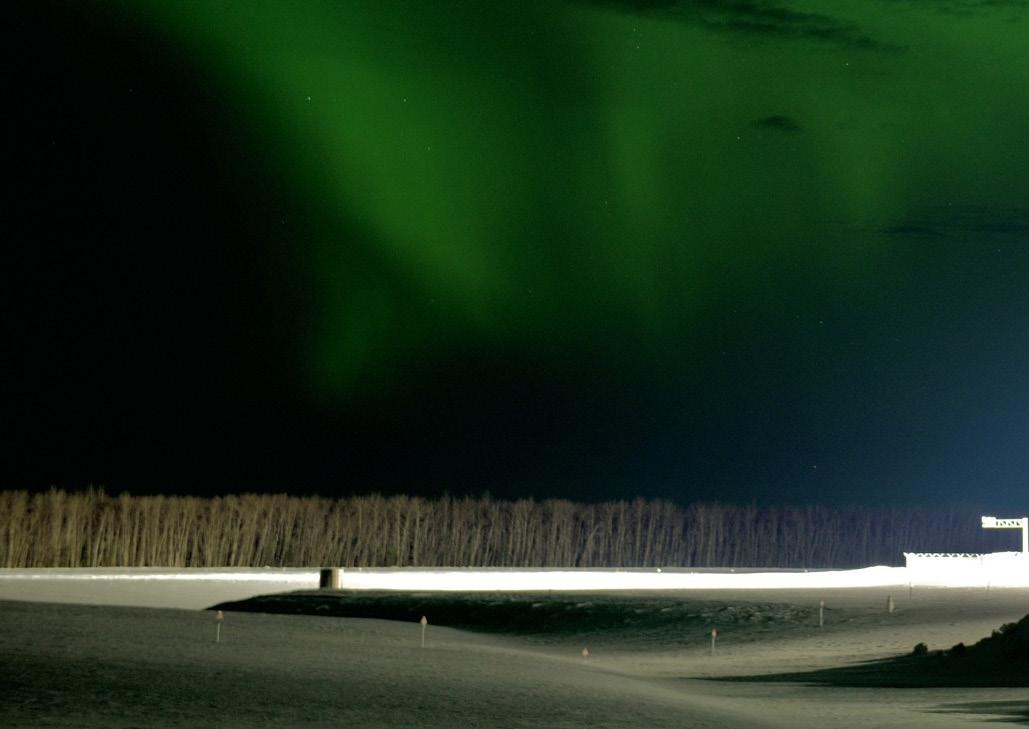
“LOCKHEED MARTIN HAS PIONEERED MUCH OF THE TECHNOLOGY THAT EXISTS IN THE DEFENSE INDUSTRY’S RADAR SYSTEMS TODAY, THEREFORE SETTING THE BAR TO DETER ADVERSARIAL THREATS AND ANTICIPATE EVOLVING BATTLESPACES”
– CHANDRA MARSHALL, VICE PRESIDENT AND GENERAL MANAGER, LOCKHEED MARTIN RADAR AND SENSOR SYSTEMS
forecasting and banking to global communications and GPS navigation, and the military assets that help to monitor and protect nations around the world.
Space Fence is now actively tracking satellites and discovering objects as small as a marble in LEO, making it a key contributor to space domain awareness.
Not only does Space Fence permit the detection of much smaller microsatellites and debris than current systems, but it also significantly improves the accuracy and timeliness with which satellite operators can detect space events and make better informed decisions about how to expend precious resources to maneuver and avoid collisions.
Building Space Fence in the
remote Marshall Islands was a great engineering accomplishment and a huge advancement in radar technology to enable dramatically increased orbital debris awareness, critical to protecting national security assets in a complex 21st Century Security® threat environment.
Lockheed Martin’s iSpace™ software, meanwhile, provides command and control and battle management capabilities for customers in all arenas that operate in the space domain.
These systems, developed by Lockheed Martin, provide the ability to detect far more debris than previous technologies could, and with greater accuracy, providing timely and actionable information to protect key assets in orbit.
LRDR technology has equally been leveraged and scaled for Lockheed Martin’s SPY-7 land and maritime radar product line.
“The SPY-7 radar product line uses LRDR technology to enhance overall strength against evolving threats,” Marshall explains.
“Providing 24/7 coverage, SPY-7 is a superior deterrence asset available for land and maritime applications around the world.”
A software-defined multi-mission radar, SPY-7 allows the rapid and efficient insertion of new capabilities and techniques, offers a threefold improvement in performance compared to current radars, and boasts advanced missile defense features that can’t be matched by any competitor.
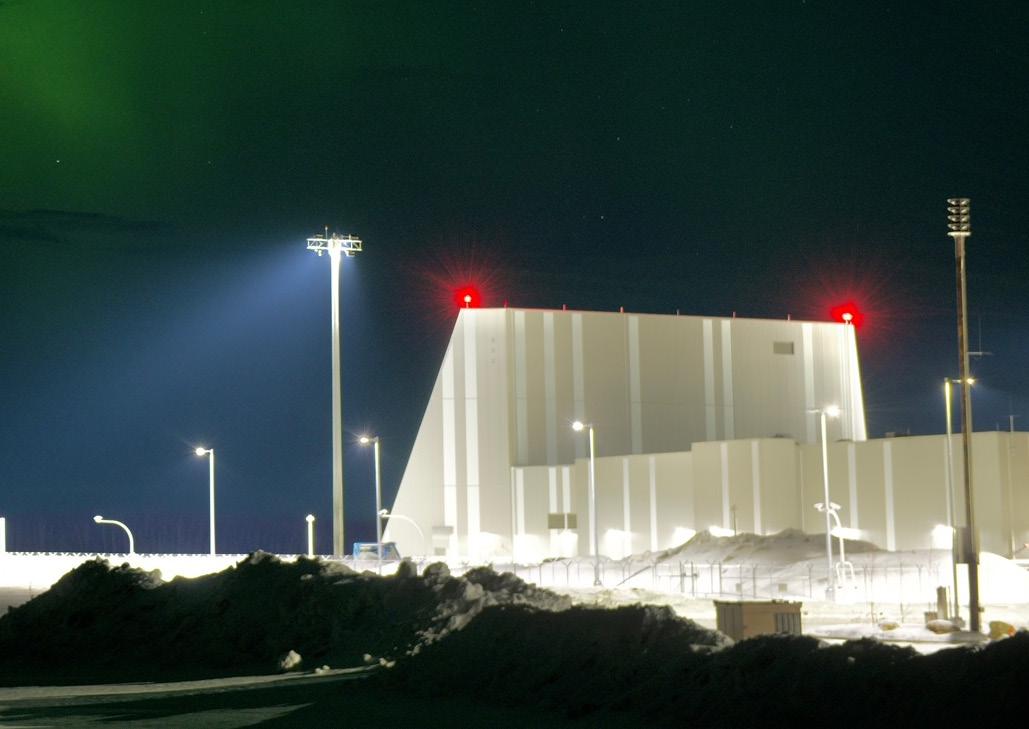

Lockheed Martin successfully demonstrated SPY-7 in April 2024 for the Aegis System Equipped Vessel (ASEV), as the radar’s tactical hardware and software tracked objects in space. This served as a critical milestone as the technology will act as the cornerstone for Japan’s national defense.
Approximately 122,000 employees in the US and internationally
345+ facilities
13,300 active suppliers in every US state
890+ suppliers in over 52 countries outside the US

It also verified the maturity of SPY-7, which is fully interoperable through the Aegis Combat System (ACS), and marked the beginning of comprehensive performance testing prior to delivery to Japan. Such vigorous testing will minimize risk and ensure the nation receives a fully integrated and calibrated system as quickly as possible.
“The Japan Ministry of Defense will field two ASEVs equipped with the SPY-7 radar system,” Marshall announces.
SPY-7 has already been radiating and tracking air and space objects at Lockheed Martin’s New Jersey facility since 2018. Japan, Spain, and Canada have also signed up to use SPY-7 in a sea-based capacity to protect their citizens.
“The world is changing rapidly, and countries need a radar that can evolve with it – SPY-7 is that radar,” she affirms.
“We are experts in radars; we’ve
built and fielded them in all kinds of terrain. Wherever a partner may want this capability, we can work with them to realize that successfully.”
In addition to the roll-out of SPY-7, Lockheed Martin is looking ahead to growth through a strong pipeline of business.
One of the company’s top goals is to make sure it delivers quality products when customers require them.
“It’s that simple. Today’s warfighting environment and rogue threats are evolving every single day, and we help our customers bring solutions to the warfighters that will ensure safety and well-being. What we do is critically important, and I’m so proud to be a part of it,” Marshall beams.
“We have worked, and will continue to work, in concert alongside our customers and suppliers to find

creative ways to ensure we can deliver products that keep military and civilians safe.”
To enhance the detection and protection of threats, it is imperative that Lockheed Martin’s systems continue to talk to each other and elevate how they collect and use data to predict and respond to what’s coming next.
“The speed of relevance is what will keep our homeland and our allies’ homelands safe from adversaries, and the Lockheed Martin radar and sensor portfolio is already a center of excellence, prepared to meet and exceed those demands,” she adds.
The company works tirelessly to make sure it is meeting the needs of not only its customers, but also the workforce.
Advocacy is of great importance to Marshall to ensure each individual is challenged, rewarded, fulfilled, and has the chance to grow within the company.
“In an organization as big as Lockheed Martin, it’s critical that we pay attention to all those who are working on our customers’ missions as if they were their own,” she sets out.
Today, supply chain disruption and labor shortages are some of the most challenging issues in the defense industry.
Filling open positions is therefore something that is also focused on daily by Lockheed Martin, who has been collaborating with economic development organizations and industry to address hiring needs and skill gaps.
“We continuously work to ensure competitive salaries, exciting work, and an overall great work environment,” enthuses Marshall.
Furthermore, there are many opportunities for women in the workplace, especially in manufacturing.
Lockheed Martin today is far more inclusive than it was in the past and recognizes the value of having a more
diverse working environment.
“I’ve personally seen a lot more diversity over my career, and with that, I’ve witnessed a direct correlation to the strength and growth of our organization.
“Investment in our teams, whether through our formal mentorship initiatives, apprenticeships, continuing education, or training and leadership programs, is a given here,” Marshall concludes.



